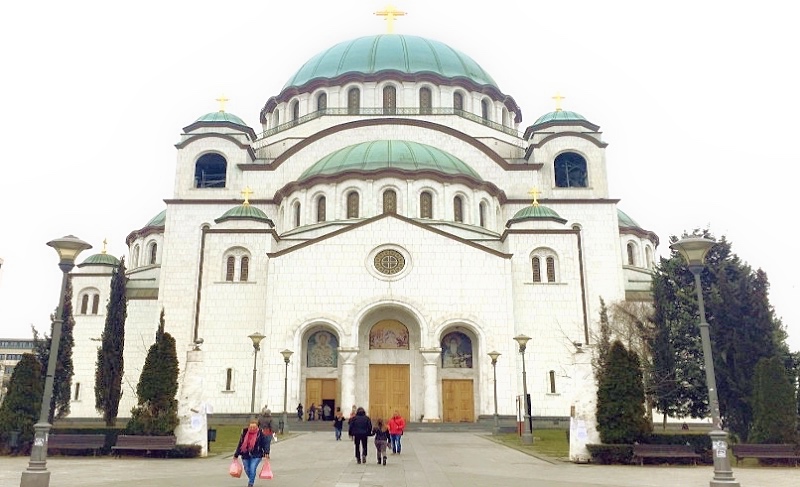It was the year 1594. Serbian lands were under the Ottoman rule for quite some time. They burned St. Sava's relics to break people's spirit and prevent future uprisings.
Saint Sava (prince Rastko Nemanjić, born 1174, died 1236) was the youngest son of Stefan Nemanja, who is considered to be the founder of medieval Serbian state. Saint Sava was the first archbishop of the independent Serbian-Orthodox Church (1219) and spiritual leader of Serbs throughout the centuries. Serbs deeply respected and revered the remains of their biggest saint, gathered around it, and sought consolation in times of despair, especially since they lost their freedom to increasingly growing Ottoman empire in 1459 (fall of the last Serbian fortification in the City of Smederevo, near Belgrade). Believing in their shepherd, St. Sava, Serbian population never accepted submission. They continuously showed the will to endure, to preserve their Christian-Orthodox tradition, their culture, and hoped to restore their sovereignty.
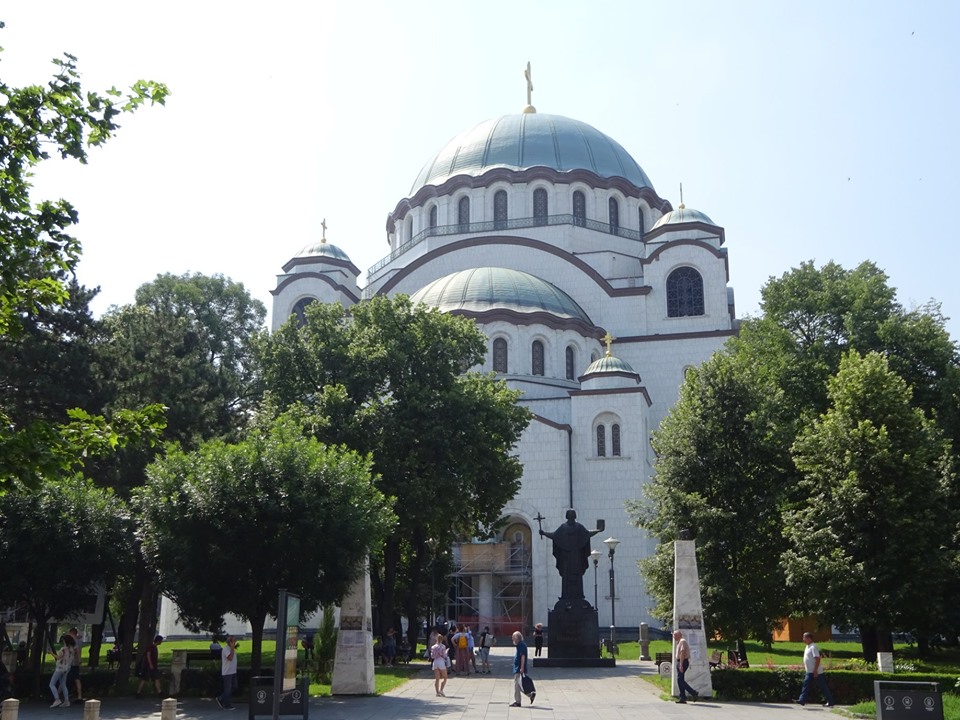
In 1594, Serbs supported Habsburg Monarchy in what is commonly known as the "Thirteen years' war" (1593-1606) against the Ottoman Turks. To punish them, Grand Vizier Sinan Pasha burned St. Sava's remains (brought from the monastery of Mileševa in southern Serbia to Vračar plateau in Belgrade, or to Tašmajdan Park as it is disputed by some historians) on April 27, 1594. He thought that this action would finally break people's spirit, and force them to accept their doom. He was wrong. Serbs were determined more than ever to regain their freedom. After two turbulent centuries of uprisings, great migrations, and sufferings, finally in the 19th century Serbia was independent once again.
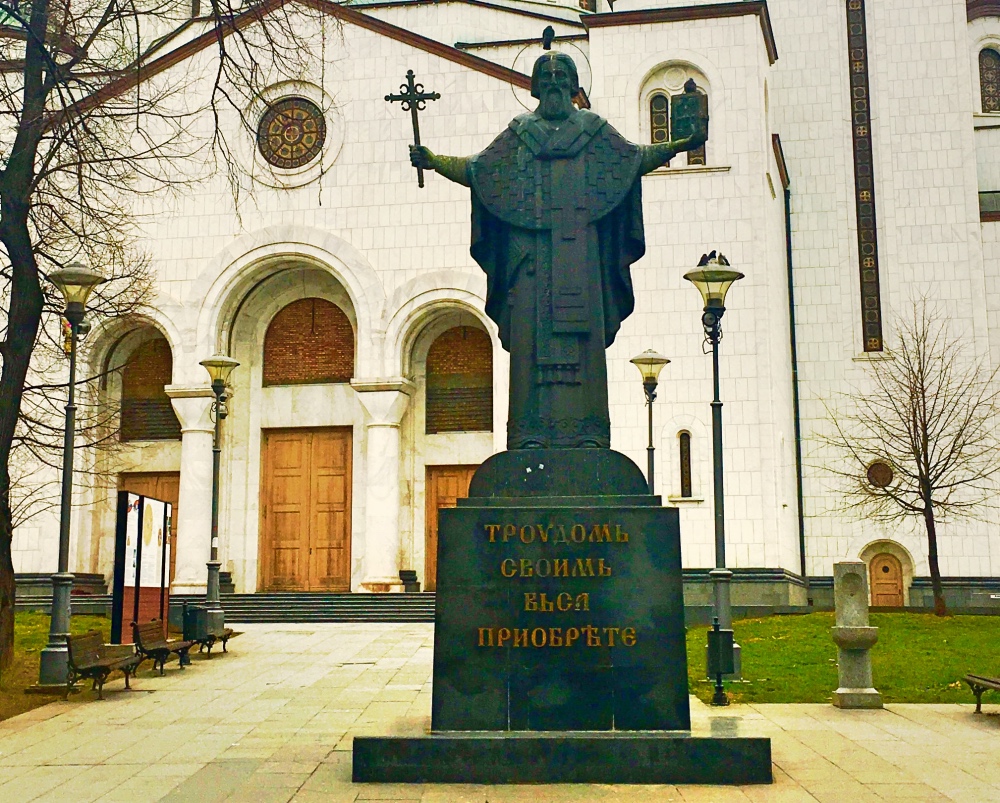
In loving memory of St. Sava, exactly 300 years after his remains were burned in Belgrade, in 1894, the initiative of building a grand cathedral on the spot of the incineration appeared. After more than 10 years of planning, everything was set. However, the political situation in Serbia around that time was very unstable. The conflict with Austro-Hungarian empire was growing, then came the First and Second Balkan Wars, and in the end the Great War (World War I).
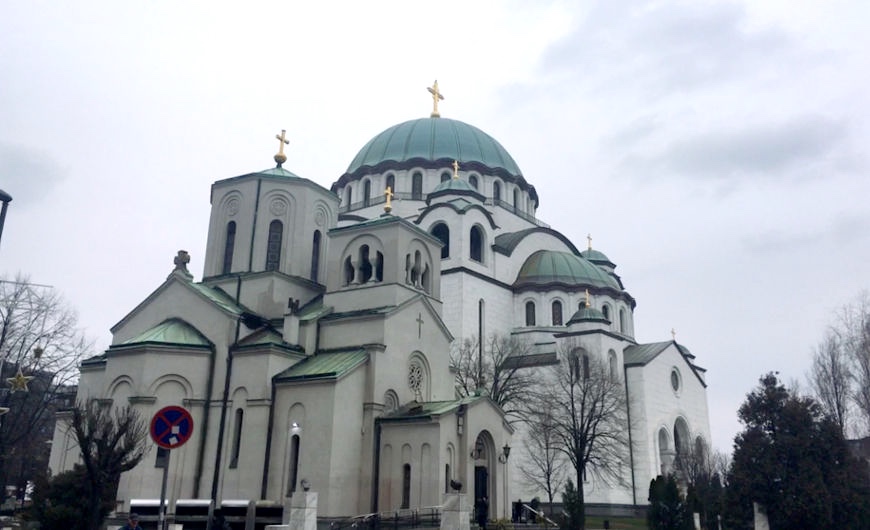
In 1926 the plans for building the St. Sava's church were renewed, and in 1935 the small church was built in just 7 days. In 1936 the foundations for the grand church were set, and by the 1941 and beginning of the World War II, the walls about 10 meters high were constructed.
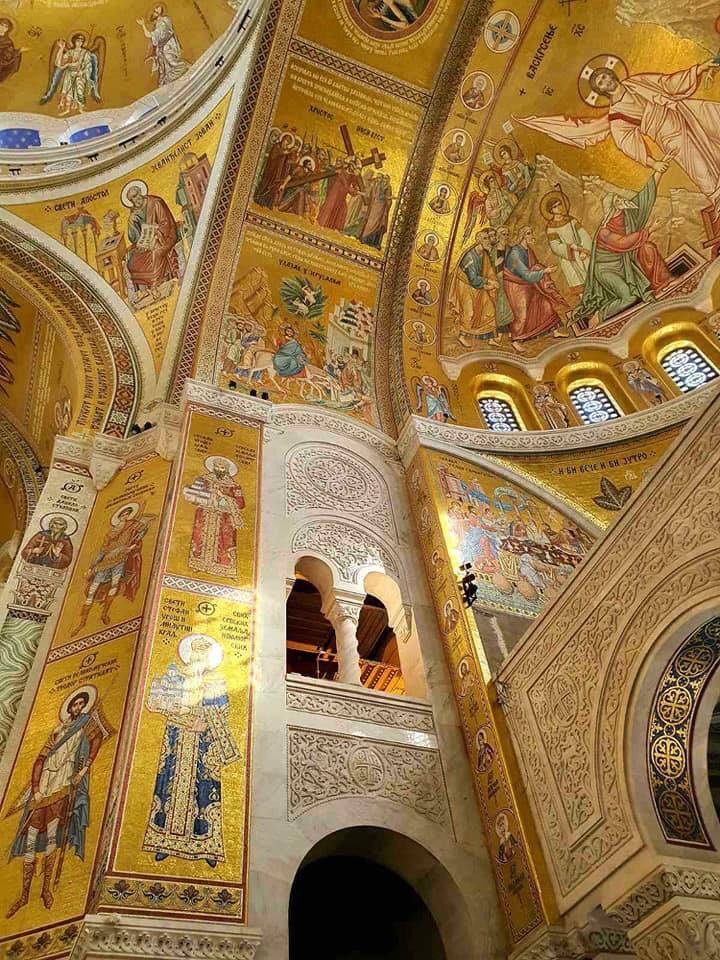
After the World War II, the communists came to power in Yugoslavia, the land was nationalized, and the space was used as a warehouse. There were initiatives even for "removal of the ruins", or to convert the place into a Museum of Religions. But the Church endured, and continuously asked the authorities to resume the construction. However, for this to happen, Tito, Yugoslav supreme communist leader, had to die. And five years after his death, in 1985, the construction of the temple was finally resumed. In 2017, the works on the exterior of the church were completed. Now, the work on the interior of the temple is in progress.
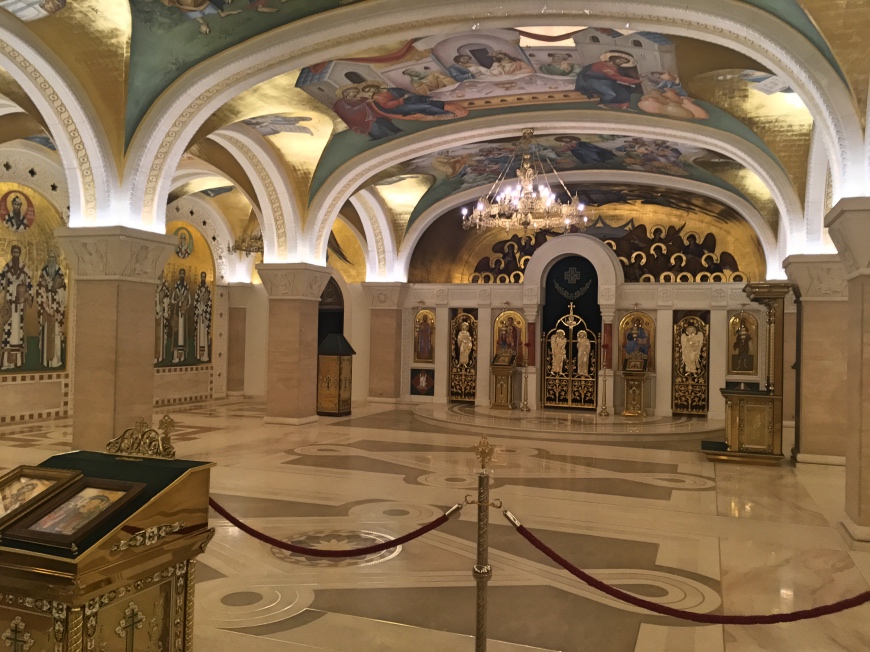
The architectural design of the church is comparable only to the Haghia Sophia in Istanbul and Alexander Nevsky Cathedral in Sofia, Bulgaria. Cathedral ("Temple", as the Serbs call it) of Saint Sava is one of the 5 largest orthodox churches in the world, and the largest one in the Balkans (South-Eastern Europe). The basis of the church is 91x81 meters and it is about 70 meters high. It is the symbol of Serbian essence, pride, tradition, and freedom.
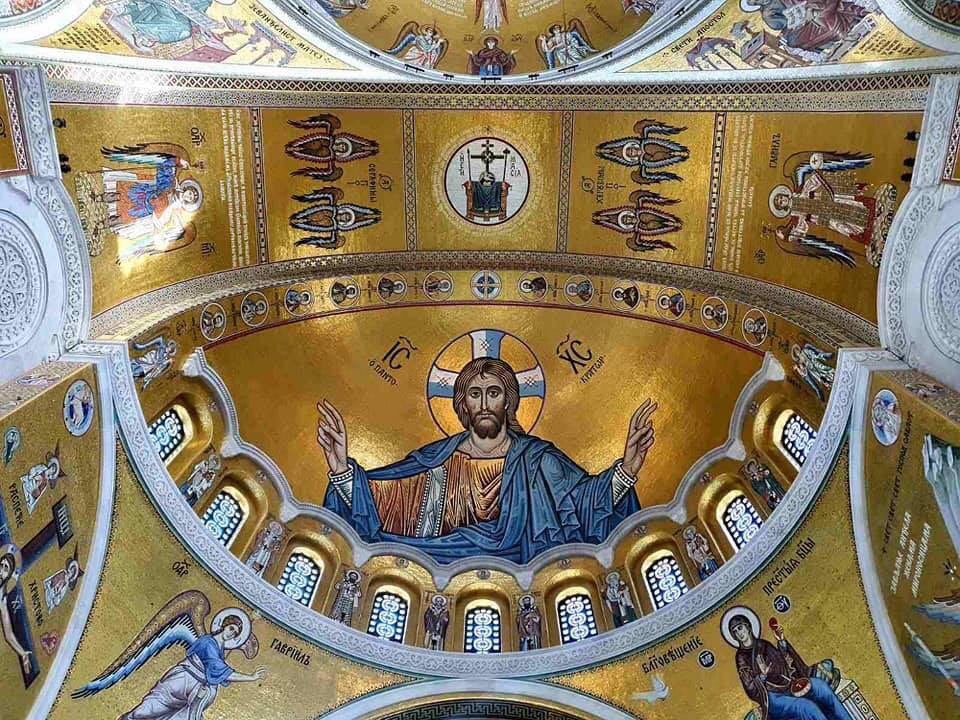
Masterpiece in Pieces
(article from Bits&Pieces)
Sometimes a photo really cannot show a true magnitude of a venture, nor its beauty. So, I will not even begin to portray it with words. You have to see it for yourself. I will give you just a couple of facts.
Setting-up the Dome of St. Sava's Church in Belgrade was one of the most daring architectural projects of the time. Back in 1989, constructors were lifting a 4000 tons heavy Dome for 40 days to the height of about 40 meters. It was unprecedented.
And what's with the interior of the Dome?
The giant mosaic of the Ascencion of Jesus was put in place in 2018. It was brought from Russia, in panels, total weighting 40 tons. In charge of this project was member of Russian Academy of Arts, Nikolay Mukhin. And 70 Russian and Serbian artists worked on it. The total cost was 4 million euros, and it was entirely donated by Russia's "Gazprom".

It was carried out in the old Russian, Serbian and Byzantine tradition and technique of painting. It represents Christ (about 14 meters long), with 4 angels, and then, in the lower part, Holy Virgin Mary with two archangels and 12 apostles all around.
This representation is somewhat unusual for Serbian churches, as commonly in the Dome would be Christ Pantocrator. However, this is not strange for Russian churches. Other thing, the Dome itself is very large (30 meters radius), so imagine a display of Christ Pantocrator of this magnitude?
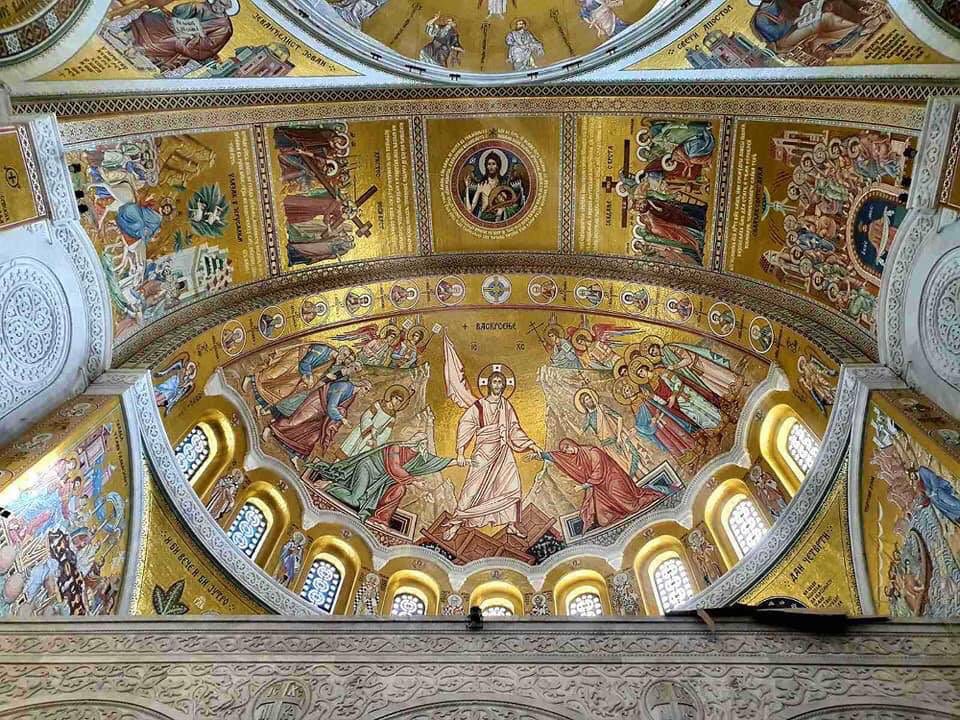
This solution perfectly fits. And everyone who saw it couldn't do much more than staring in admiration.
 English (United Kingdom)
English (United Kingdom)  Srpski latinica (Srbija)
Srpski latinica (Srbija) 

